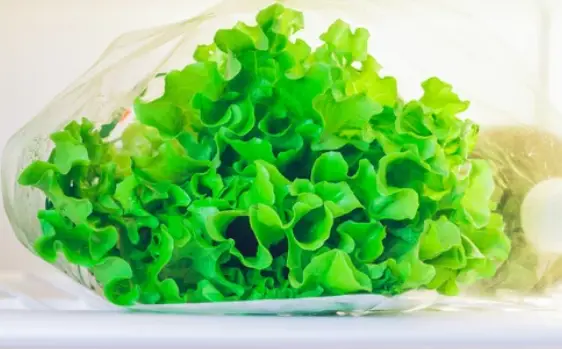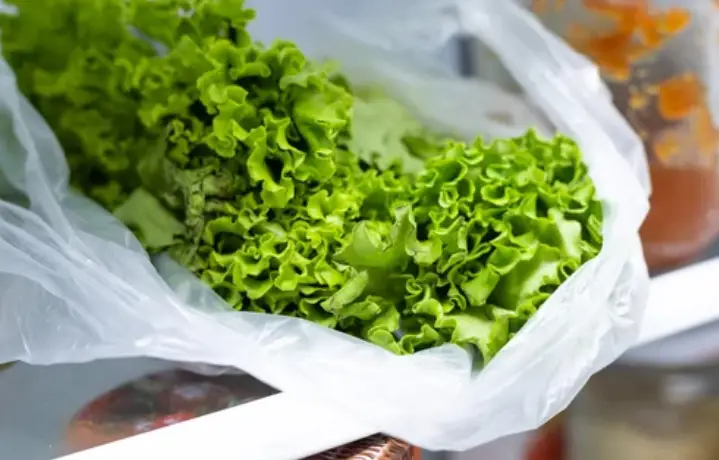Lettuce is a staple in many households and can be used in various ways, from salads to sandwiches.
However, one question that often comes up is: how long does lettuce last in the refrigerator?
In this post, we will explore the factors that affect the shelf life of lettuce, including the type and proper storage techniques.
We will also discuss the signs of spoiled lettuce and how to avoid cross-contamination.
So, whether you’re a salad lover or just enjoy the occasional sandwich, this post will provide you with the information you need to keep your lettuce fresh and safe to eat.
How Long Does Lettuce last in the Refrigerator?

How Long Does Lettuce last in the Refrigerator
The answer to this question depends on a few factors, including the type of lettuce and how it was stored. For example, head lettuce, such as Iceberg or Romaine, will last longer in the refrigerator than leaf lettuce, such as Spinach or Arugula.
Head lettuce can last up to two weeks in the refrigerator if it is stored properly. To do this, remove the lettuce from its original packaging and wrap it in a paper towel. Place the lettuce in a plastic bag or container with a lid, making sure to remove as much air as possible. This will help to keep the lettuce fresh and prevent it from becoming wilted.
Leaf lettuce, on the other hand, has a shorter shelf life and will typically only last for about one week in the refrigerator. It’s also important to store it properly by wrapping it in a paper towel, placing it in a plastic bag or container with a lid, and removing as much air as possible.
It’s also important to note that lettuce that has already been washed and cut will not last as long as lettuce that has not been washed or cut. If you plan on using the lettuce for multiple meals, it’s best to wash and cut it right before you plan on using it.
Generally, it’s best to use lettuce as soon as possible after purchasing it to ensure that it is freshest and most flavorful. If you find that you have lettuce that is starting to wilt or become slimy, it is best to discard it.
Signs of Spoiled Lettuce
It’s important to know the signs of spoiled lettuce so that you can properly dispose of it and avoid any potential foodborne illness. Some common signs of spoiled lettuce include:
Wilted or slimy leaves
If the leaves of your lettuce are wilted or slimy, it’s a sign that it has gone bad and should be discarded.
Discoloration
If the lettuce leaves are discolored or have brown or black spots, it’s a sign that it is no longer fresh and should be thrown away.
Off-odor
Lettuce should have a fresh and crisp smell. If it has an off-odor or a sour smell, it’s a sign that it has gone bad and should be discarded.
Molds
If you see mold on your lettuce, it’s a sign that it has gone bad and should be thrown away immediately.
It’s also important to inspect your lettuce before using it. If you notice any of these signs of spoilage, it’s best to discard the lettuce and purchase a fresh head.
Another important thing to note is that lettuce which has been cross-contaminated with raw meat, poultry, seafood, or their juices, can also cause food poisoning. To avoid cross-contamination, always wash your hands and any utensils or cutting boards that come into contact with raw meats before handling lettuce.
Conclusion
Lettuce can vary depending on the type of lettuce and how it is stored.
Proper storage can help to extend the shelf life of lettuce and ensure that it is fresh and flavorful when you are ready to use it.
To be safe, it’s best to use lettuce as soon as possible after purchasing it and storing it properly in the refrigerator.
Lettuce can usually last for a week or two in the refrigerator if stored properly, but it’s important to be aware of the signs of spoilage and to discard any lettuce that shows signs of going bad.
Proper storage and handling can help to extend the shelf life of lettuce and ensure that it is safe to eat.




